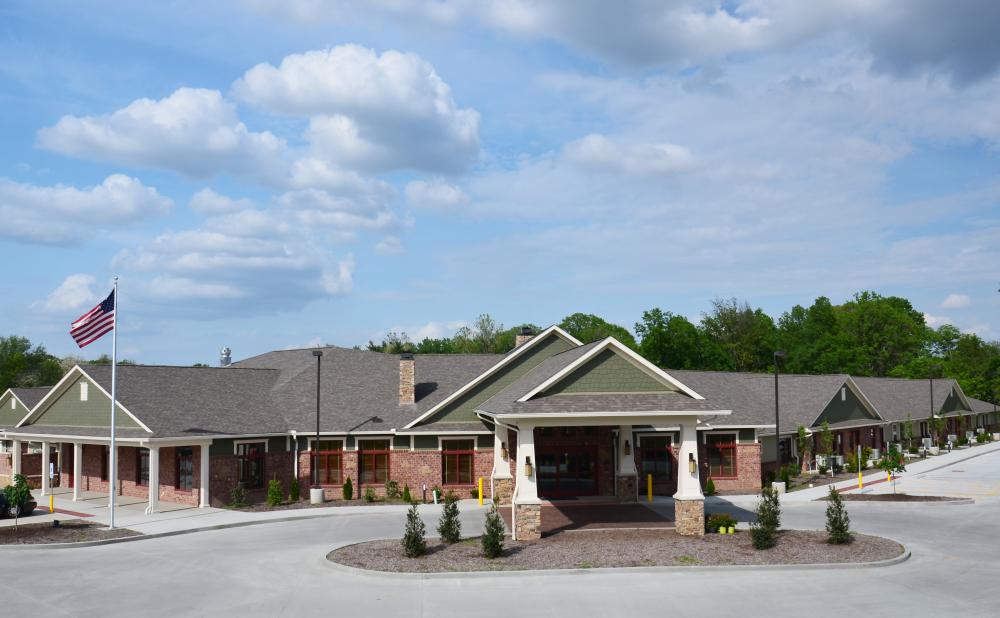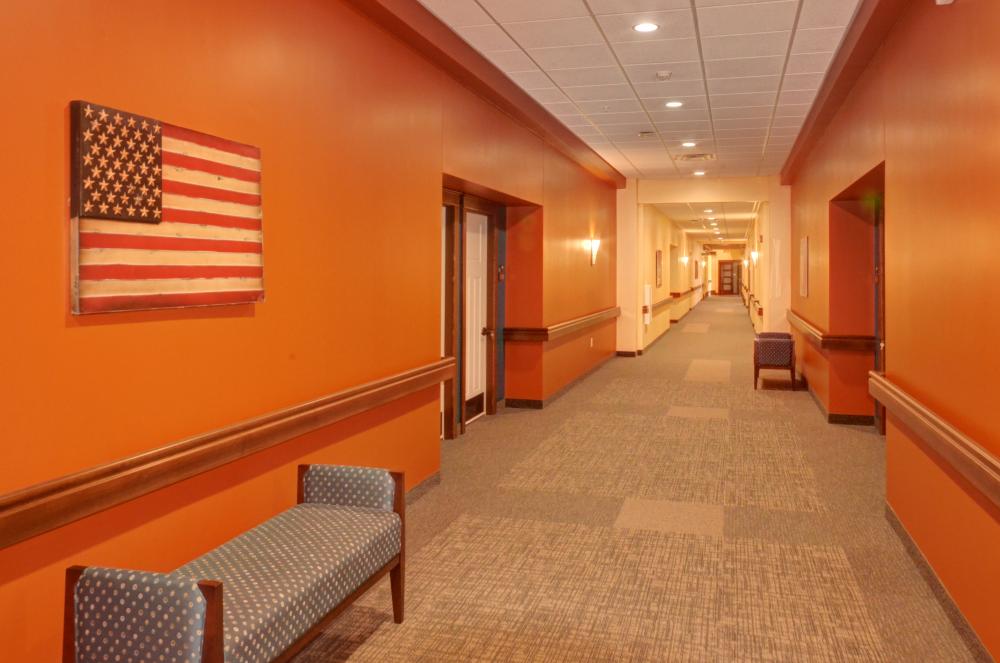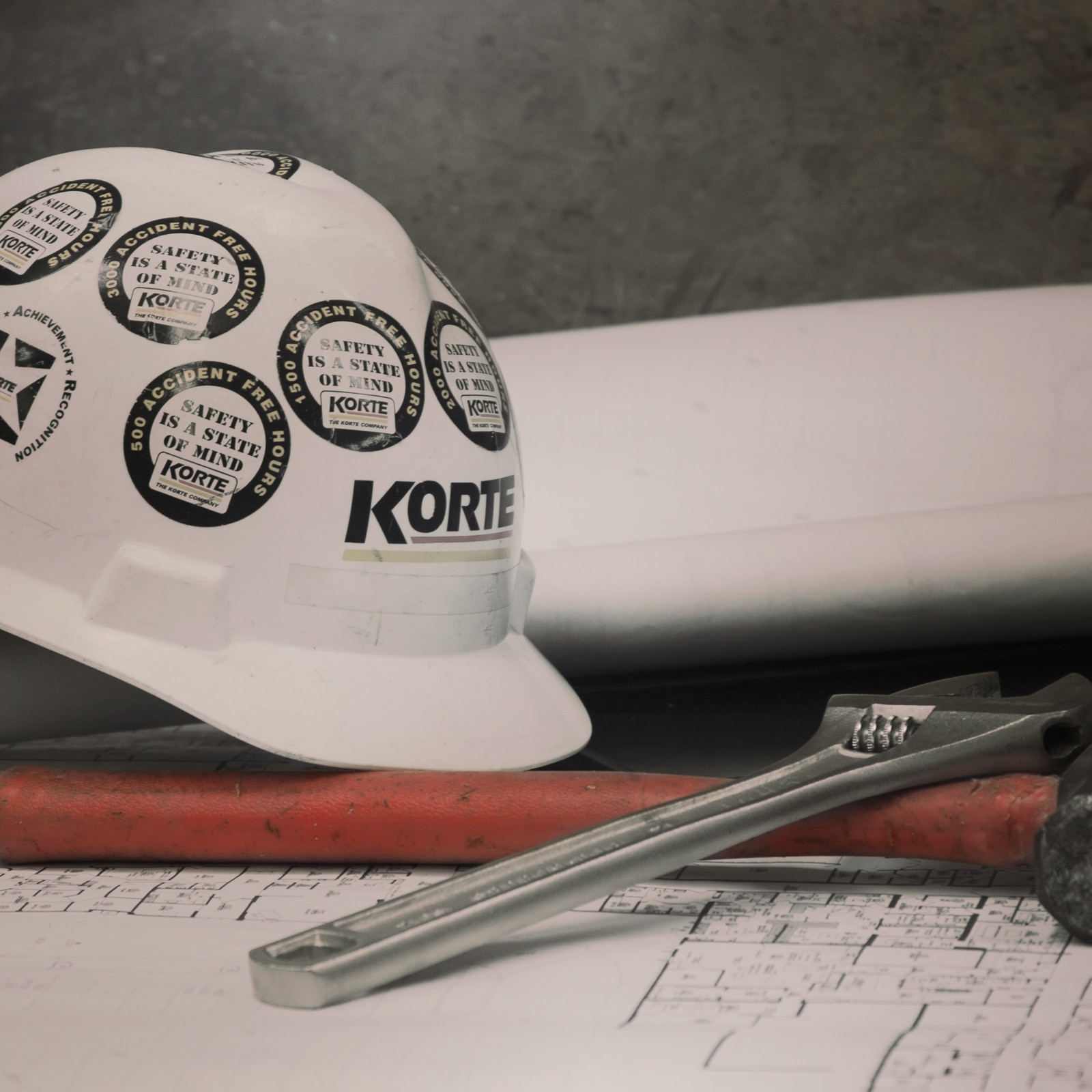
A nursing home or senior living facility has a unique dual purpose: to deliver excellent care and to provide a high quality of life for senior citizens. That’s a major change from the past, when nursing home design followed the hospital model, and efficient care was the driving force behind design and construction.
The traditional model of nursing home design
For years, nursing homes were synonymous with low-tech hospitals. Throughout the U.S., roughly 2 million beds have been built in skilled nursing centers, long-term care facilities and nursing homes. Nearly all of those facilities were designed with rooms branching off central, hospital-like corridors. Rooms were built to be semi-private, with two beds separated by a curtain, one by a window and another by a bathroom. In many ways, our seniors were seen purely as patients. Nearly all facilities incorporated group showers, a central dining facility for all residents and a kitchen that was off limits to residents. Maintenance functions weren’t neatly separated from living areas. It was a one-size-fits-all model that provided sterile environments and lacked many amenities and individual spaces.
Facilities were efficient, cost-effective and profitable, and residents could receive the care they needed at an affordable cost to families. But nursing homes generally didn’t make for a good home. They weren’t a place to live and enjoy the golden years.

Blending quality care with quality of life in modern nursing home design
Dignity, privacy and lifestyle have become core values in senior care and nursing home design. And new, innovative materials and technologies have made it possible to cost-efficiently design and build better senior living environments that allow for improved quality of life.
As part of this trend in senior living and nursing home design, it’s become increasingly important to build for the continuum of care. What we mean is that as seniors age and require different levels of care, senior living centers need facilities that can provide the right living environment and care. Smart nursing home architecture design and construction allow you to build the proper environments for seniors as they move from independent living to assisted living and into skilled care, or even specialty care.
The right facility design and construction program will help you take advantage of the latest trends in senior living. Your facility should tangibly help caregivers provide excellent care and help seniors enjoy a high quality of life. And it should be a home for seniors as they age and move through different life stages.
Learn the latest trends in senior living interior design, architecture and construction
This article is an excerpt taken from The Owner’s Guide to Senior Living Construction and Design. This comprehensive guide covers the latest trends in senior living interior design, architecture and construction. And what they mean for your facility and construction program. To download the guide, fill out the form below.
